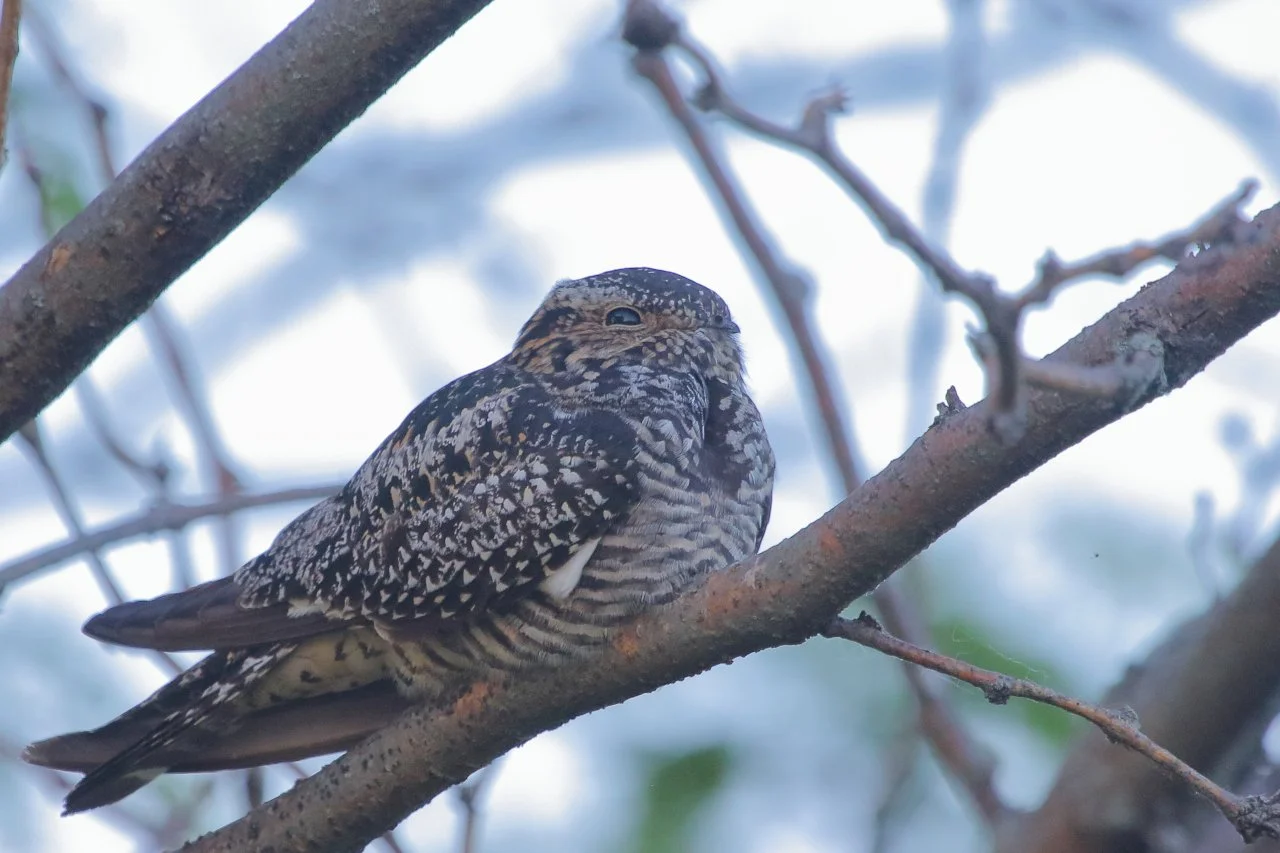Bird of the Month: Common Nighthawk
Common Nighthawk. Photo by Jeff Bryant.
By Roger Digges, CCAS Vice-President
Recently, my longtime walking partner and even longer time spouse Cathy and I were walking along the Hickman Wildflower Walk at Meadowbrook Park around sunrise on a muggy morning. We were listening to the familiar bird songs and calls we’d heard all summer when we were surprised by a sound we didn’t immediately recognize, a series of sharp, clear calls, all on the same pitch. We looked up and there scything gracefully through the dawn sky above us were a pair of birds with long wings that had a crook in them and bright, white rectangular patches beyond the crook. No other bird in our area looks anything like them. We were excited to realize we’d just seen our first Common Nighthawks of the season.
Members of the nightjar family (named for being active in hours of darkness or low light as well as their jarring call), Common Nighthawks are crepuscular, which means they are generally seen at dawn (15–60 minutes before sunrise) or dusk (a half hour before to an hour after sunrise). I have very rarely seen them during the day. Even though they sleep on branches or the ground, their camouflaged plumage is so effective you have to be very observant (and lucky!) to find one.
Like almost all nightjars, Common Nighthawks are obligate insectivores. They must eat insects to survive. You’ll see them soaring or swooping or looping, whatever it takes to fuel their bodies or those of their nestlings, or in their case, I should just say their young. Nighthawks don’t build nests. Rather females lay and incubate their eggs directly on the ground or, in urban areas, flat graveled roofs. Once chicks hatch both parents feed them, catching insects with their unusually wide mouths, then regurgitating them for their young. Since female nighthawks only lay two eggs a season, it is critical for them to have access to insect-rich environments to ensure that the next generation thrives.
At what time of year can you find Common Nighthawks? They begin arriving in our area from South America in late April when insects begin to become more available. Many of the first birds we see are adding weight to migrate to our north. But others will spend the summer rearing their young in Champaign County. The reason I chose them as the bird of the month is that the first two weeks of September are when you are most likely to see Common Nighthawks in our area. This is partly because those northern breeding birds are passing through again, and partly because the young of our local birds have fledged and getting ready to fly south.
Where and how can you find these birds? They show up in the skies over woodlands and grasslands, so you may see them in any of our natural areas. But I’ve also seen flocks over open grassy fields, Illinois Field, Memorial Stadium, parking lots, wherever bright lights attracts the insects they eat. The best way to find them is to listen. If you have the Merlin app, it does a good job of picking up their song. You can’t attract them to your yard unless you are surrounded by a lot of trees or large open areas. I hope you find them this September because they are certainly graceful.
How are Common Nighthawks doing? Like insects, not well. While there are still an estimated 23 million of these birds according to Partners in Flight, the same organization lists them as “a common bird in steep decline,” as there were closer to 44 million Common Nighthawks 50 years ago. The use of pesticides, the loss of open woodlands, the decline in the number of flat graveled roofs, and the number car collisions with low-flying nighthawks all contribute to this decline. How can you help? Reduce or eliminate your use of pesticides, advocate for open woodlands, and slow down when driving in wooded areas.

